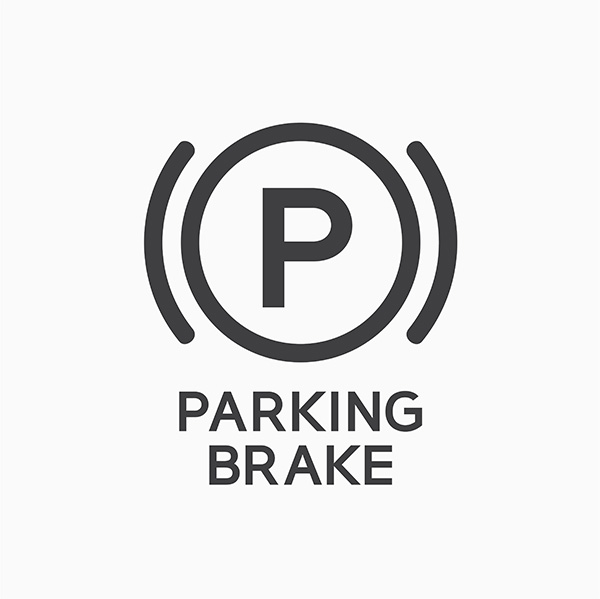
You hop in your car, ready to hit the road, but something feels off. The engine is running, and the gears are engaged, but the car isn’t moving as freely as it should. That’s when you realize—the hand brake is still on. Maybe you release it right away, or maybe you’ve already driven a few miles without noticing. But does driving with a stuck hand brake actually harm your car? And if so, how serious is the damage?
How the Hand Brake Works
The hand brake, also known as the parking brake or emergency brake, is designed to keep your car stationary when parked. It operates separately from the main braking system, usually engaging a cable that locks the rear wheels. This is useful when parking on an incline or as a backup in case the primary brakes fail.
Hand brakes can either be manual levers, electronic buttons, or foot-operated pedals, depending on your car’s make and model. Regardless of the type, its job is the same—to prevent unwanted movement when the car is parked. However, when left engaged while driving, it disrupts the normal operation of the braking system and can lead to various issues.
What Happens When You Drive with a Stuck Hand Brake
Leaving the hand brake engaged while driving puts unnecessary strain on multiple components of your car. The severity of the damage depends on how far and how fast you drive before realizing the issue.
One of the most immediate effects is excessive friction on the rear brakes. Since the hand brake applies pressure to the brake pads or shoes, they remain partially engaged even when you're accelerating. This leads to overheating, which can cause brake fade, reduced braking efficiency, and, in extreme cases, permanent damage to the braking system.
In some situations, a stuck hand brake can cause your tires to drag instead of rolling freely. This results in noticeable resistance, making your car feel sluggish and less responsive. Over time, this extra stress can wear out the tires unevenly, reducing their lifespan and increasing the risk of blowouts.
If you’ve driven only a short distance, you might get away with little to no damage, but prolonged use can cause severe wear on the brake pads or shoes, leading to costly repairs.
Signs That Your Hand Brake Is Stuck
Sometimes, the hand brake doesn’t fully disengage even when you release it. If this happens, you’ll likely notice some warning signs while driving.
One common indicator is a burning smell. Overheated brakes emit a strong odor due to excessive friction. If you smell something unusual while driving, it’s a good idea to pull over and inspect the issue before it worsens.
Another noticeable sign is a decrease in acceleration. If your car feels like it’s dragging or struggling to gain speed, the rear wheels may still be partially engaged. You might also feel a pulling sensation as if the car isn’t moving as freely as it should.
In some cases, your brake warning light may stay illuminated on the dashboard. While this doesn’t always mean the hand brake is stuck, it’s a sign that your braking system needs attention.
Can a Stuck Hand Brake Cause Long-Term Damage
Driving with the hand brake engaged once or twice for a few feet isn’t likely to cause irreversible damage. However, repeated occurrences or extended driving with a stuck brake can lead to long-term issues.
One major concern is brake pad and rotor wear. If the hand brake remains engaged while driving, the constant friction can wear down the brake pads prematurely, making them less effective over time. If the rotors or drums overheat, they can warp, reducing braking performance and making future stops less predictable.
The brake cables can also suffer from extended use. If the hand brake is already worn or rusted, forcing the car to move while it’s engaged can cause the cable to stretch or even snap. If this happens, the hand brake might not engage properly when you actually need it, putting you at risk in situations where parking on a slope is necessary.
Overheating brakes can lead to brake fluid degradation. Since brake fluid plays a crucial role in hydraulic braking, any contamination or excessive heat can reduce its effectiveness. This may cause soft or spongy brakes, making stopping distances longer and less reliable.
How to Prevent and Fix a Stuck Hand Brake
To avoid unnecessary wear and damage, always double-check that the hand brake is fully disengaged before driving. Make it a habit to release it completely and ensure there’s no resistance before accelerating.
If the hand brake becomes stuck and won’t release, there are a few things you can try. In some cases, gently moving the car forward and backward can help loosen the brake. If it’s a manual lever, pulling it up and down a few times might help free it. For electronic hand brakes, restarting the car or engaging and disengaging the system multiple times can reset it.
However, if the brake remains stuck or if you suspect something is wrong, it’s best to have it inspected by a professional. A trained technician can determine whether the brake cable is worn, if the pads or shoes need replacement, or if there’s another issue affecting the system.
If you’re in Riverside, CA, and suspect your hand brake isn’t functioning properly, having it checked early can save you from costly repairs down the line. Whether you need an adjustment, cable replacement, or a full brake inspection, addressing the problem sooner rather than later ensures your car remains safe and reliable on the road.
Driving with a faulty hand brake can lead to serious issues over time. Let Premier West Gears in Riverside, CA, take care of your braking system before the damage gets worse. Schedule your service now!